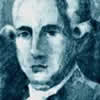Start / Previous censuses / Censuses prior to the 20th century
-
Data collection through the Internet ended on May 15, 2012

Count of Aranda Census / Floridablanca Census / Manuel Godoy Census / 1897 Census
Detailed results: Censuses of 1850, 1860, 1877, 1887 and 1897
The history of Spanish population censuses necessarily begins with a reference to the "Neighbourhoods" carried out by the Spanish monarchy during the 16th and 17th centuries. These operations, which mainly aimed to identify the number of neighbours living in the different locations of the kingdom of Castilla, had purely fiscal purposes. It is difficult to define the unit investigated, ?the neighbour?, precisely and, consequently, the conversion of the variable into "number of inhabitants" has still not been carried out satisfactorily.
Therefore, the genuine history of the Spanish population censuses begins in 1768, when the Count of Aranda gave specific orders to commence tasks aimed at establishing the "genuine population of this Monarchy" so as to "promote useful ideas to the State, in terms of the sex and age of the population."
 The execution of the Census ordered by the Count of Aranda was commissioned to the bishops who were given appropriate instructions to, through the parish priests of their different dioceses, collect the information required on the different locations in the areas in compliance with a single form.
The execution of the Census ordered by the Count of Aranda was commissioned to the bishops who were given appropriate instructions to, through the parish priests of their different dioceses, collect the information required on the different locations in the areas in compliance with a single form.
Said form had to summarise the population in said locations using a two-way layout in accordance with six age groups, sex and marital status.
Since the results obtained from these tasks were not as satisfactory as expected, the Count of Floridablanca undertook the execution of a new Population Census.
The first step for the execution of this Census was taken when, as established by a Royal Order from 1785, the intendants of the different provinces were requested to send a list of all the towns in the area so as to create a Nomenclator that would be used to limit the field of action.
 The tasks for the execution of the Census ordered by Floridablanca commenced in 1787 in line with the instructions envisaged in Royal Order of July 28 1786.
The tasks for the execution of the Census ordered by Floridablanca commenced in 1787 in line with the instructions envisaged in Royal Order of July 28 1786.
In this case, the Census was commissioned to the intendants of each province, who were to send the civil authorities of each place (mayors, aldermen?) a single questionnaire in which they were to enter all the information requested.
The questionnaire had to summarise the population in a two-way layout, similar to the one used in 1768. Furthermore, the population had to be classified according to a table of occupations including 23 classes.
 The next Population Census was ordered by Mr. Manuel Godoy in 1797 although, in this case, we only know the results obtained, which were published in 1801, as the details of how the operation was carried out are unknown.
The next Population Census was ordered by Mr. Manuel Godoy in 1797 although, in this case, we only know the results obtained, which were published in 1801, as the details of how the operation was carried out are unknown.
The Napoleonic wars and the political instability of the subsequent periods prevented the execution of new censuses until 1857, when the next Population Census was performed; it was published in 1858. This new Census was the first to use the provincial division endorsed in 1833, which is still valid today. It was also the first to include the classification of the population as "established" or "non-resident." It is important to note that, on its publication, the persons in charge of this Census warned of the scarce reliability of the figures obtained, and recommended a new Census should be carried out as quickly as possible in order to take advantage of the experience gained from the previous one.
Following these recommendations, another more meticulous Census was performed in 1860. The main innovations were, as well as the reliability of the information, population tables classified by elementary education, classification of the population by comprehensive age intervals and, mainly, the calculation of the "de jure population."
 Although the Royal Decree passed in 1858 which ordered the realisation of the 1860 Census established that this type of operation should be renovated every five years, a new period of political instability prevented this determination. The next Census was not performed until 1877, under the rule of King Alfonso XII, when Martínez Campos was the head of the government. The following Censuses was carried out in 1887 and 1897, thus closing the series of censuses performed in the 19th century.
Although the Royal Decree passed in 1858 which ordered the realisation of the 1860 Census established that this type of operation should be renovated every five years, a new period of political instability prevented this determination. The next Census was not performed until 1877, under the rule of King Alfonso XII, when Martínez Campos was the head of the government. The following Censuses was carried out in 1887 and 1897, thus closing the series of censuses performed in the 19th century.

